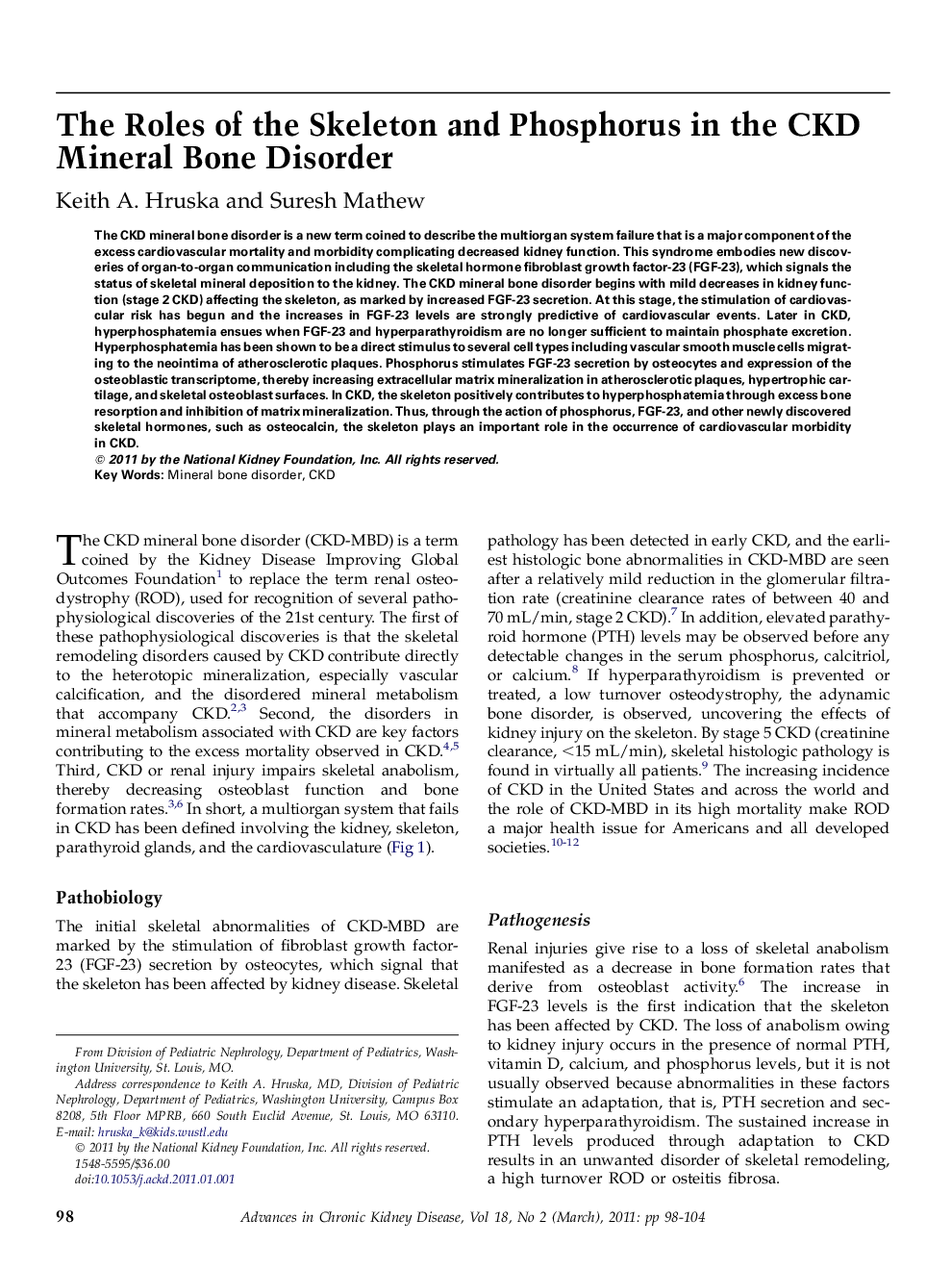| Article ID | Journal | Published Year | Pages | File Type |
|---|---|---|---|---|
| 3847062 | Advances in Chronic Kidney Disease | 2011 | 7 Pages |
Abstract
The CKD mineral bone disorder is a new term coined to describe the multiorgan system failure that is a major component of the excess cardiovascular mortality and morbidity complicating decreased kidney function. This syndrome embodies new discoveries of organ-to-organ communication including the skeletal hormone fibroblast growth factor-23 (FGF-23), which signals the status of skeletal mineral deposition to the kidney. The CKD mineral bone disorder begins with mild decreases in kidney function (stage 2 CKD) affecting the skeleton, as marked by increased FGF-23 secretion. At this stage, the stimulation of cardiovascular risk has begun and the increases in FGF-23 levels are strongly predictive of cardiovascular events. Later in CKD, hyperphosphatemia ensues when FGF-23 and hyperparathyroidism are no longer sufficient to maintain phosphate excretion. Hyperphosphatemia has been shown to be a direct stimulus to several cell types including vascular smooth muscle cells migrating to the neointima of atherosclerotic plaques. Phosphorus stimulates FGF-23 secretion by osteocytes and expression of the osteoblastic transcriptome, thereby increasing extracellular matrix mineralization in atherosclerotic plaques, hypertrophic cartilage, and skeletal osteoblast surfaces. In CKD, the skeleton positively contributes to hyperphosphatemia through excess bone resorption and inhibition of matrix mineralization. Thus, through the action of phosphorus, FGF-23, and other newly discovered skeletal hormones, such as osteocalcin, the skeleton plays an important role in the occurrence of cardiovascular morbidity in CKD.
Keywords
Related Topics
Health Sciences
Medicine and Dentistry
Nephrology
Authors
Keith A. Hruska, Suresh Mathew,
